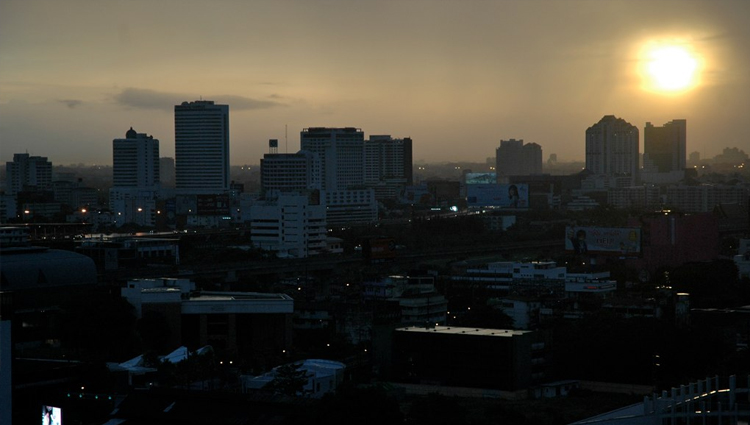Hyperlocal Effects From A Changing Climate
Urban heat island effects, in addition to global warming, make cities even hotter. White roofs might cool cities.
Image

Media credits
WASHINGTON (ISNS) -- Cities are made chiefly of concrete and asphalt, which soak up more sunlight during the day than soil and have a harder time radiating the heat away during the night. Add to that all the energy -- natural gas, electricity, gasoline -- used in high-density places, and cities become hot islands floating in a sea of cooler countryside.
On some days London is as much as 20 degrees Fahrenheit warmer than its surroundings. And that’s just because of the “urban heat island” effect. Any long-term climate effects brought on by general greenhouse warming would add additional heat.
A new study by three scientists at the Met Office, the British government agency responsible for making weather forecasts, looks at how hot cities could be by the year 2050. They use computers to predict how temperatures will change for places around the world under various scenarios, such as a doubling of the amount of heat-trapping atmospheric carbon dioxide over 1950 levels.
The urban heat island effect will only get more important in coming years since more people are moving to cities. The urban population of the world could double by the year 2050.
“The cumulative impact of climate change and continued urbanization will exacerbate the urban heat island effect in many locations,” said Mark McCarthy, one of the authors of the study, which appears in the journal Geophysical Research Letters. “This should increase the number and severity of extreme temperature events that urban citizens could be exposed to.”
If carbon dioxide is twice the 1950 levels, the Met Office simulations suggest that some cities in the Middle East could see temperature rises of 5.4 degrees while cities in the western United States, southern Asia, and western Africa would suffer an increase of about 2 degrees.
As temperatures rise, so will energy demands. When it gets hot, people turn on air conditioners, the largest consumers of electricity on a hot day. This works to cool specific rooms, but air conditioners also produce heat by removing it from indoor areas and dumping it into the wider city environment -- contributing to making hot places even hotter.
On July 19, Department of Energy Secretary Steven Chu announced action to mitigate one cause of urban heat, namely the heating of buildings by summertime sunshine. The DOE plan provides tips on to make buildings cooler by giving them light-colored roofs.
A dark roof absorbs much of the sunlight falling on it. Not only does this roof get hot, raising the surrounding air temperature, but it makes the building warmer too, which in turn calls for more air conditioning and consumes more electric power at just the time in the late afternoon when the power grid is generally stressed to its maximum load of the day. When more electricity is needed during these peak hours, generators have to work harder, and this usually means the burning of extra fossil fuel -- adding carbon dioxide and still more heat to the atmosphere.
A roof painted white, by contrast, reflects much more of the sunlight back into the sky, keeping the building beneath cooler.
“Cool roofs are one of the quickest and lowest cost ways we can reduce our global carbon emissions and begin the hard work of slowing climate change,” said Chu. The DOE will begin converting its own buildings to the cool- roof protocol, and is encouraging other federal departments to use light-colored roofs too.
Roofs and pavement cover up to two-thirds of an urban area, and a recent study in the journal Environmental Research Letters by DOE’s Lawrence Berkeley National Laboratory estimated that if all cities with populations larger than one million increased their reflectivity -- the fraction of incident sunlight sent back into the sky -- by using white or silvery coatings on rooftops and parking lots, then a one-time reduction in carbon dioxide emissions of up to 57 billion metric tons could be attained.
University of California, Berkeley, professor emeritus of physics and a California energy commissioner Arthur Rosenfeld tried to put this CO2 saving in perspective.
"If we assume that roofs have a service life of 20 years, we can think of an equivalent rate of 1.2 billion metric tons per year. That offsets the emissions of roughly 300 million cars for 20 years," said Rosenfeld.
Filed under
